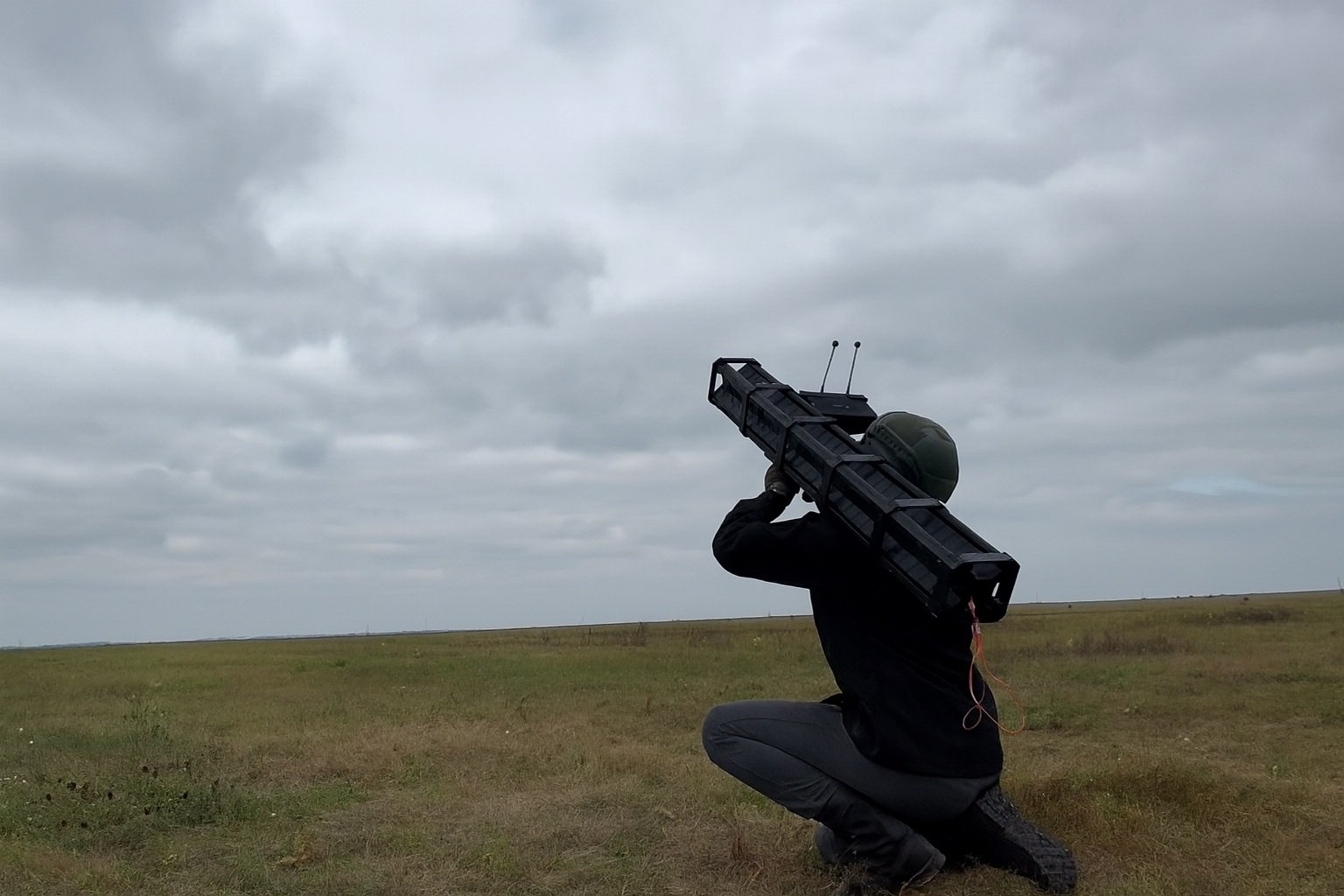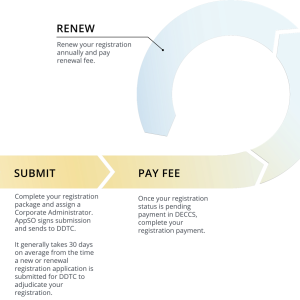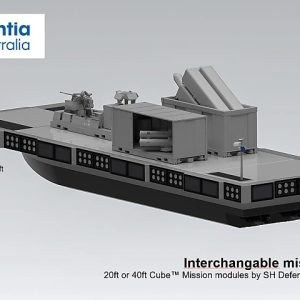
Russia has begun field testing an FPV rocket drone interceptor that blends tube launch, a detachable solid‑fuel booster and first‑person‑view control to chase hostile UAVs. The design—credited to the “Vektor” group—aims to give infantry a cheap kinetic option between jammers and high‑end missiles, using 3D‑printed, reloadable launch tubes and modular projectiles. The approach reflects a broader push toward low‑cost, soldier‑portable counter‑UAS concepts accelerated by lessons from Ukraine’s drone‑saturated front lines.
Key Facts
What: Handheld, tube‑launched FPV rocket drone interceptor with 3D‑printed, reusable launcher and modular, booster‑assisted projectile.
How it works: Solid‑fuel boost to speed/altitude, then FPV manual guidance to collide with target UAV; no GPS or autonomy required.
Why it matters: Targets the negative cost‑exchange problem in drone defense by offering a cheap kinetic intercept for small drones.
Status: Prototype testing documented by open‑source imagery; no official adoption announced.
What Russia is testing—and why it matters
The prototype pairs a reusable tube with a compact projectile: camera and antenna up front, a detachable booster at the rear, and an aerodynamically simple body that flies like a scaled‑down missile. After boost, the FPV rocket drone interceptor transitions to direct, goggle‑based piloting, letting operators steer visually through clutter and jamming. That human‑in‑the‑loop design sidesteps reliance on GPS or onboard autonomy, a deliberate hedge against electronic warfare that has plagued both sides in Ukraine.
This concept targets the budget math of counter‑UAS. Using a $100k interceptor against a $5k quadcopter is strategically backwards; militaries need scalable shots that don’t bankrupt magazines. Analysts across NATO and the United States have flagged the cost‑exchange asymmetry and urged layered defenses that include low‑cost effectors. A man‑portable, rocket‑assisted, FPV‑guided approach is one attempt to bend that curve.
Guidance, propulsion, and intercept geometry
Technically, the design blends three regimes. First, a high‑thrust boost phase provides the energy to close range quickly. Second, a brief coast/controlled flight window lets the operator correct lead and aspect as the target maneuvers. Third, a terminal collision or proximity burst would finish the intercept (the available footage does not confirm a fuze). Operator workload is non‑trivial: tracking a small, agile multirotor against background clutter while managing closure rates and avoiding overshoot takes training and excellent link latency. That may explain the preference for FPV—latency can be kept low and the pilot can make snap geometry decisions that small onboard processors might mishandle in a dense RF environment.
There are trade‑offs. A rocket plume telegraphs launch and can bloom sensors or give away position; booster separation adds a failure mode; and manual piloting limits concurrency. Weather, line‑of‑sight and RF interference will shape the effective envelope. The FPV rocket drone interceptor is not a silver bullet; at best it is a niche, rapid‑response layer in a wider stack that still needs detection, identification, cueing and deconfliction with friendly air. NATO’s evolving C‑UAS work underscores exactly this “system‑of‑systems” approach.
How it fits a modern C‑UAS stack
Effective counter‑drone architecture is layered: sensors (radar, EO/IR, RF), soft‑kill (jamming, spoofing), and hard‑kill (guns, nets, missiles, lasers). The FPV rocket drone interceptor nests on the hard‑kill, short‑range end—faster than a shotgun‑equipped UGV, cheaper than a missile, more portable than a vehicle‑mounted cannon. If paired with acoustic or RF detections that hand off a bearing cue, an FPV pilot could be “heads‑up” before the target crests the skyline. NATO and allied studies continue to emphasize doctrine, interoperability and training standards so that such edge effectors plug cleanly into command‑and‑control.
On cost and sustainment, 3D‑printed launchers and airframes reduce cycle time and encourage field repair. Modularity hints at variant payloads—fragmentation sleeves or focused blast for small multirotors, perhaps a net or standoff ring for larger fixed‑wing drones—though none of that is evidenced in the current footage. Strategically, the value proposition is not exquisite performance; it is repeatable, “good‑enough” attrition at the skirmish line. That mirrors a wider move toward attritable, low‑unit‑cost unmanned systems across air and land.
What to watch next
Three questions will determine whether this reaches units beyond small innovation teams. First, connectivity: can video links stay resilient against frontline jamming without driving latency too high for intercept geometry? Second, lethality and safety: is a collision‑only kill reliable enough, or will developers add a small proximity fuze, increasing complexity and regulatory burden? Third, integration: can squads receive reliable cues from local C2 and sensors so they launch at the right target, at the right time, without fratricide? These are doctrine questions as much as engineering challenges, and they track with NATO’s ongoing standardization push in the C‑UAS mission.
As with many battlefield hacks that later become programs of record, early results rarely predict end‑state performance. The available evidence shows an inventive, low‑end kinetic option entering trials—nothing more, nothing less. If the FPV rocket drone interceptor matures, expect it to fill a very specific gap: counter‑small‑UAS shots inside a kilometer or two when jammers miss and missiles are overkill.
Related analysis: The UK’s plan to deploy AI‑enabled swarms will stress both defense and doctrine—our deep dive here.
Context: NATO is advancing alliance‑wide C‑UAS doctrine and procurement frameworks that shape how such edge effectors would be fielded at scale. See overviews here and a recent contracting milestone here.
Bottom line: The FPV rocket drone interceptor is an agile, low‑end idea with the right instincts—use speed to gain closure, put a human back in the loop for terminal guidance, and print what you can. Whether it scales will depend on link resilience, kill mechanisms and doctrine. Its mere appearance, however, confirms the battlefield’s direction of travel: low‑cost, modular, soldier‑level tools that claw back the cost‑exchange in the drone fight.
References
- Primary source: “Russia develops FPV-guided rocket drone interceptor,” Defence Blog, Sep. 17, 2025. Link.
- NATO Allied Command Transformation, Countering Class 1 Unmanned Aircraft Systems (C‑UAS) Handbook. PDF.
- CSIS, “Cost and Value in Air and Missile Defense Intercepts,” Feb. 13, 2024. Link.
- RAND, Assessing Progress on Air Base Defense, 2025. Link.
- NATO, “NATO works with industry partners on counter‑drone technologies,” Oct. 4, 2023. Link.
- JAPCC, A Comprehensive Approach to Countering Unmanned Aircraft Systems, 2020. PDF.
Further Reading
- Turkey unveils sea‑skimming WIG combat drone — maritime unmanned strike trends.
- NATO to adopt first‑ever counter‑drone doctrine — policy context and timelines.












